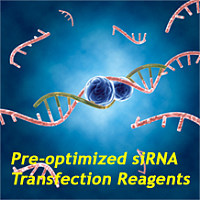How neurons differ from each other is largely determined by their specific repertoire of mRNAs. The genes expressed by a given
neuron reflect its developmental history, its interaction with other cells, and its synaptic activity. Since the introduction
of reverse transcription polymerase chain reaction (RT-PCR), it has been possible to identify specific mRNAs present in small
samples of total RNA. But isolating RNA from only those cells of interest, and not others, represents a significant challenge.
Several approaches can be used to isolate RNA from selected neurons. Following whole-cell patch-clamp recording, mRNA can
be harvested from living cells by aspirating the cytoplasm into the patch-clamp pipette. Transcripts expressed in the recorded
neuron can then be amplified by RT-PCR. Another way of isolating identified neurons is to use cell-specific promoters to drive
the expression of a marker gene such as green fluorescent protein (GFP). RNA can then be isolated from GFP-positive cells.
In a tissue context, laser microdissection can also be used to excise the cells of interest directly into an RNA isolation
solution. The above methods of RNA isolation can also be combined with RNA amplification and microarray technology to identify
specific transcripts that are unique to the cell type being studied. Here we provide detailed protocols for harvesting RNA
from single cells, methods for RNA purification, and PCR amplification.






